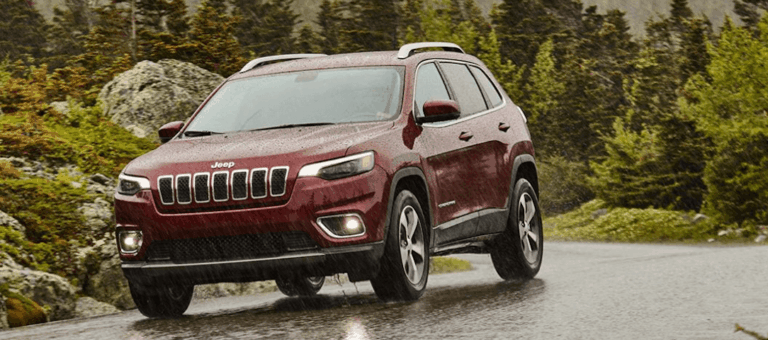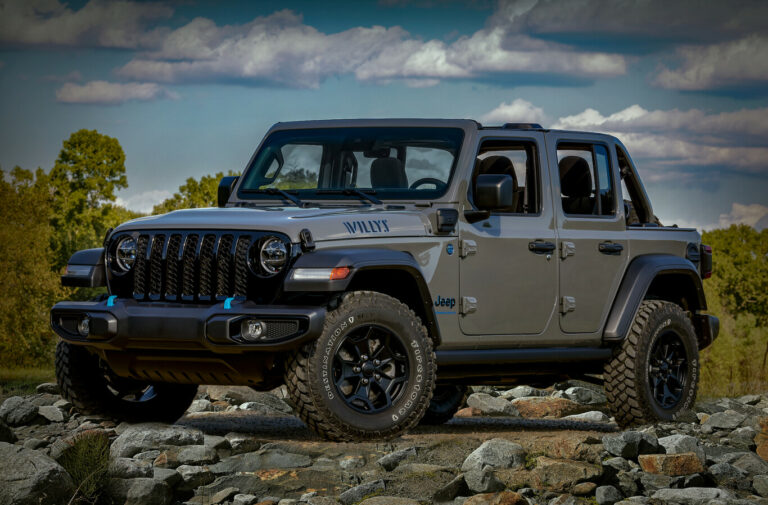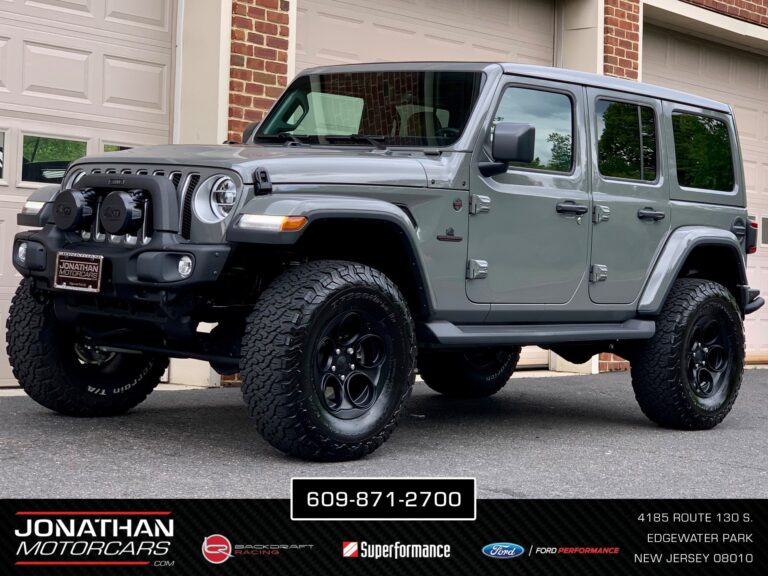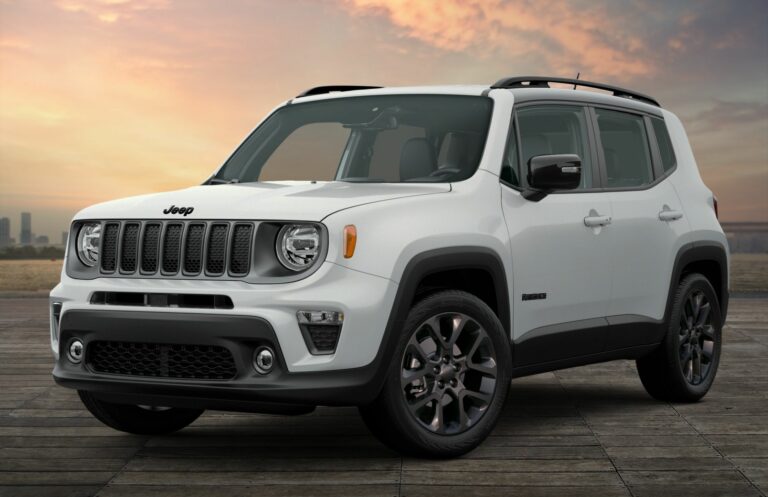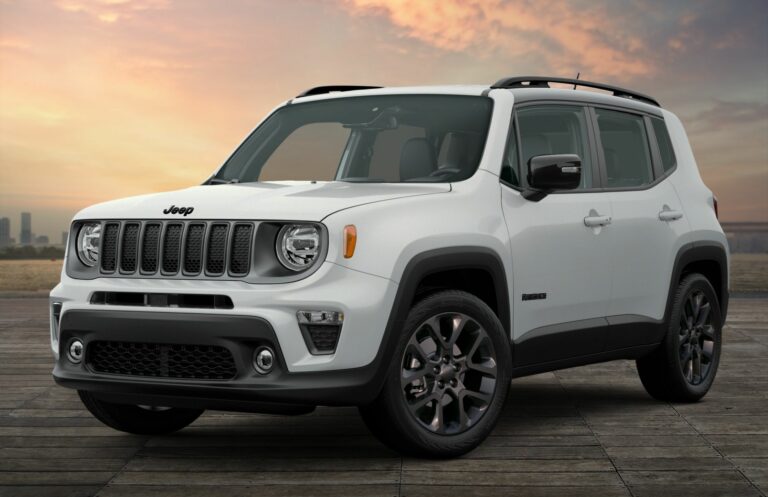Used 2001 Jeep Grand Cherokee For Sale: A Comprehensive Buyer’s Guide
Used 2001 Jeep Grand Cherokee For Sale: A Comprehensive Buyer’s Guide jeeps.truckstrend.com
Introduction: Discovering the Enduring Appeal of a Classic SUV
The year 2001 marked a significant point in the lineage of the iconic Jeep Grand Cherokee, specifically within its second generation (WJ). For many, the 2001 model represents a sweet spot: blending modern amenities with the rugged capability that defines the Jeep brand, all while offering remarkable value in the used car market today. Whether you’re an off-road enthusiast seeking a capable platform, a family looking for a dependable and spacious SUV, or simply someone who appreciates the timeless design and utility of a classic American vehicle, a used 2001 Jeep Grand Cherokee for sale holds considerable appeal.
Used 2001 Jeep Grand Cherokee For Sale: A Comprehensive Buyer’s Guide
This article serves as your comprehensive guide to navigating the process of finding, evaluating, and ultimately owning a 2001 Jeep Grand Cherokee. We’ll delve into what makes this model a compelling choice, what to look for, common pitfalls to avoid, and essential tips to ensure a successful purchase. By the end, you’ll be well-equipped to make an informed decision and potentially drive home in a piece of automotive history that still has plenty of adventures left to offer.
Why Consider a Used 2001 Jeep Grand Cherokee?
Despite being over two decades old, the 2001 Grand Cherokee continues to be a popular choice in the used vehicle market for several compelling reasons:
- Legendary Off-Road Capability: At its core, it’s a Jeep. With robust 4×4 systems like Quadra-Trac II and the highly advanced Quadra-Drive (featuring Vari-Lok front and rear differentials), the 2001 WJ Grand Cherokee is remarkably capable off the pavement, especially for its price point. It can handle snow, mud, and moderate trails with ease, making it perfect for outdoor enthusiasts.
- Durable Powertrains: The available engines, particularly the venerable 4.0L PowerTech inline-six, are known for their longevity and reliability when properly maintained. The 4.7L PowerTech V8 offers more power and smoothness, making highway cruising more comfortable.
- Comfort and Features for its Era: Depending on the trim level (Laredo, Limited, Overland), the 2001 Grand Cherokee offered features like leather seating, automatic climate control, premium sound systems, power-adjustable seats, and even heated seats. These features, while standard today, were quite luxurious for a mainstream SUV of its time.
- Affordability: One of the biggest draws is its accessible price. A well-maintained 2001 Grand Cherokee can be acquired for a fraction of the cost of a newer SUV, offering exceptional bang for your buck in terms of capability and features.
- Parts Availability and Community Support: Due to its popularity and long production run, parts for the WJ Grand Cherokee are widely available and relatively inexpensive. Furthermore, a vast online community of owners provides a wealth of knowledge, troubleshooting tips, and modification ideas.

Understanding the 2001 Jeep Grand Cherokee Lineup: Trims and Engines
To make an informed decision, it’s crucial to understand the different configurations offered in 2001:
Engine Options:
- 4.0L PowerTech Inline-Six (I6): This legendary engine is known for its bulletproof reliability, strong low-end torque, and ease of maintenance. It produces 195 horsepower and 230 lb-ft of torque. While not a speed demon, its robust nature makes it ideal for off-roading and general utility.
- 4.7L PowerTech V8: For those desiring more power, the 4.7L V8 offers 235 horsepower and 295 lb-ft of torque. It provides smoother acceleration, better towing capacity, and a more refined driving experience on the highway. While generally reliable, some earlier versions can be prone to oil sludge issues if maintenance is neglected.
Trim Levels:
- Laredo: The base model, but still well-equipped. It typically includes cloth seats, power windows/locks/mirrors, and air conditioning. It’s often found with the 4.0L engine and Quadra-Trac I or Quadra-Trac II 4×4 systems.
- Limited: A step up, offering more luxury features such as leather seating, automatic climate control, heated power seats, premium audio, and often a sunroof. The 4.7L V8 was optional or standard on many Limited models, frequently paired with Quadra-Trac II or the more advanced Quadra-Drive.
- Overland: The top-tier trim, introduced in 2002 but some late-production 2001 models might share similar features. It typically includes the 4.7L V8 as standard, along with Quadra-Drive, unique interior accents (like redwood trim), upgraded wheels, and all available luxury features.
- Sport: A less common trim, often a Laredo with specific appearance packages or a limited set of premium features.
4×4 Drivetrain Systems:
- Quadra-Trac I: A full-time all-wheel-drive system with no low-range gearing. It’s simple and effective for most on-road conditions, including light snow and rain.
- Quadra-Trac II: A more advanced full-time 4×4 system with a low-range transfer case (2WD/4-HI/4-LO options). It uses a progressive, speed-sensing torque transfer system for improved traction.
- Quadra-Drive: The most capable system, building on Quadra-Trac II by adding Vari-Lok progressive axles (limited-slip differentials) in both the front and rear. This allows power to be sent to the wheels with the most traction, even if only one wheel has grip, making it exceptionally capable in extreme off-road conditions.
Key Inspection Points Before Buying a Used 2001 Grand Cherokee
When inspecting a 2001 Grand Cherokee, thoroughness is key. Here’s a checklist of vital areas:
- Rust: This is critical, especially in regions with road salt. Check the frame rails, rocker panels, wheel wells, door bottoms, and around the gas tank. Surface rust is common; excessive, structural rust is a deal-breaker.
- Engine:
- 4.0L I6: Listen for ticking (exhaust manifold cracks are common and minor), knocking, or excessive valvetrain noise. Check for oil leaks around the valve cover, oil pan, and rear main seal. Inspect the coolant for signs of oil or sludge.
- 4.7L V8: Look for oil leaks, especially around the valve covers. Listen for knocking or ticking noises, particularly on startup. Check the oil dipstick for signs of sludge (a thick, tar-like residue), indicating neglected oil changes.
- In both engines, check the coolant reservoir for proper level and clarity.
- Transmission: Test drive to ensure smooth shifts in all gears, both up and down. Listen for clunking or slipping. Check the transmission fluid level and condition (should be clear red, not brown or burnt-smelling).
- Transfer Case: Engage 4-HI and 4-LO (if equipped) and listen for grinding or clunking. Ensure the system engages properly. Check for fluid leaks.
- Suspension & Steering:
- Look for worn ball joints, tie rods, and control arm bushings (common wear items).
- Check the steering box for excessive play or leaks.
- Bounce each corner of the vehicle to check shock absorber health.
- Brakes: Inspect rotors for deep grooves or warping. Test the brakes for shuddering or pulling.
- Electrical System: Test all power windows, door locks, mirrors, radio, HVAC controls, and dashboard lights. Pay particular attention to the blend door actuators for the HVAC system, as these commonly fail, leading to inconsistent heating/cooling from different vents.
- Interior: Check the condition of seats (leather cracking is common), headliner (sagging), carpets, and dashboard for cracks or damage. Ensure all seatbelts function.
- Tires: Inspect tread depth and look for uneven wear patterns, which can indicate alignment issues or worn suspension components.
- Service Records: Ask for any available service history. A well-documented maintenance history is a strong indicator of a well-cared-for vehicle.
Common Issues and What to Expect
While generally robust, the 2001 Grand Cherokee has a few common quirks and issues to be aware of:
- Blend Door Actuators: As mentioned, these small motors control airflow and temperature within the HVAC system. Their failure is very common and can be a costly repair if done by a shop, as it often requires dashboard disassembly. DIY replacement is possible but involved.
- Power Window Regulators: The plastic components within the window regulators can become brittle and break, leading to non-functional power windows. Replacements are readily available.
- Steering Box Play/Leaks: Over time, the steering box can develop play, leading to a loose feeling in the steering. Leaks are also possible.
- Viscous Coupler (Quadra-Trac I/II): The viscous coupler in these transfer cases can wear out, leading to binding or noise, especially when turning tightly.
- Differential Noise (Quadra-Drive): The Vari-Lok differentials, while excellent for traction, require specific fluid (synthetic 75W-140 with friction modifier) and can develop noise if fluid is old or incorrect.
- Rust: Persistent issue in northern climates. Be vigilant.
- Exhaust Manifold Cracks (4.0L): A common, though usually minor, issue on the 4.0L, causing a ticking sound.
- Fuel Pump Issues: Like any older vehicle, the fuel pump can eventually fail.
Tips for a Successful Purchase
- Set a Realistic Budget: Don’t just budget for the purchase price. Factor in potential immediate repairs, routine maintenance, insurance, and registration. An extra $500-$1500 for initial fixes is a good buffer.
- Get a Pre-Purchase Inspection (PPI): This is perhaps the most important tip. Have a trusted, independent mechanic (ideally one familiar with Jeeps) inspect the vehicle thoroughly. They can identify hidden problems you might miss.
- Test Drive Thoroughly: Drive the Jeep on various road surfaces – city streets, highway, and if possible, some unpaved roads. Test all functions: 4×4 systems, HVAC, radio, cruise control. Listen for unusual noises.
- Check the VIN History: Use services like CarFax or AutoCheck to review the vehicle’s history for accidents, salvage titles, flood damage, mileage discrepancies, and past service records.
- Negotiate: Based on the vehicle’s condition, mileage, trim, and any identified issues from your inspection, be prepared to negotiate the price. Research comparable sales in your area.
- Consider Aftermarket Support: The WJ Grand Cherokee has excellent aftermarket support for parts, upgrades, and modifications. This can be a benefit if you plan to customize or improve your vehicle.
Maintaining Your 2001 Grand Cherokee (After Purchase)
Once you’ve purchased your 2001 Grand Cherokee, proper maintenance is key to its longevity:
- Regular Oil Changes: Crucial, especially for the 4.7L V8, to prevent sludge buildup. Use recommended oil types and intervals.
- Fluid Checks and Changes: Regularly check and change transmission fluid, transfer case fluid (ensure correct type for your system), and differential fluids.
- Tire Rotation and Alignment: Essential for even tire wear and stable handling.
- Address Issues Promptly: Don’t put off small repairs. A minor issue like a leaking gasket or a noisy bearing can quickly escalate into a major problem if neglected.
- Join a Community: Online forums (like JeepForum.com or NAXJA.org for the 4.0L) are invaluable resources for troubleshooting, DIY guides, and connecting with other owners.
Estimated Price Range for Used 2001 Jeep Grand Cherokee For Sale
The price of a used 2001 Jeep Grand Cherokee can vary significantly based on condition, mileage, trim level, engine, drivetrain, geographical location, and maintenance history. The following table provides a general estimate:
| Condition | Mileage Range | Estimated Price Range (USD) | Key Factors Affecting Price |
|---|---|---|---|
| Fair | 180,000+ | $1,500 – $3,500 | Visible cosmetic flaws, minor mechanical issues, likely needs some repairs, higher mileage. |
| Good | 120,000 – 180,000 | $3,500 – $6,500 | Minor cosmetic wear, mechanically sound but might have common age-related issues, average mileage. |
| Excellent | Under 120,000 | $6,500 – $10,000+ | Very clean interior/exterior, minimal rust, well-documented service history, low mileage, premium trims (Limited/Overland). |
Note: Prices are estimates and can fluctuate based on market demand, specific features (e.g., Quadra-Drive, sunroof), and whether the vehicle is sold by a private party or a dealership. A dealer typically charges more but may offer warranties.
Frequently Asked Questions (FAQ) about the 2001 Jeep Grand Cherokee
Q1: Is the 2001 Jeep Grand Cherokee reliable?
A1: Yes, generally. The 4.0L engine is renowned for its reliability and longevity. The 4.7L V8 is also reliable but requires diligent oil changes to prevent sludge. Like any 20+ year old vehicle, specific components will wear out, but major drivetrain failures are less common if maintenance is kept up.
Q2: Which engine is better, the 4.0L I6 or the 4.7L V8?
A2: It depends on your priorities. The 4.0L is simpler, incredibly robust, and excellent for low-end torque in off-roading. The 4.7L offers more horsepower, smoother acceleration, and better towing capacity, making it preferable for highway driving or heavier loads. Fuel economy is similar, with the 4.0L often slightly better.
Q3: What’s the difference between the 4WD systems (Quadra-Trac I, II, and Quadra-Drive)?
A3: Quadra-Trac I is a basic full-time AWD. Quadra-Trac II adds a low-range gear for off-roading. Quadra-Drive is the most advanced, adding Vari-Lok limited-slip differentials to the front and rear axles, providing superior traction in challenging conditions by sending power to the wheels with the most grip.
Q4: What’s the typical fuel economy for a 2001 Grand Cherokee?
A4: Expect around 14-16 MPG city and 18-20 MPG highway for both engines, depending on driving style and vehicle condition. The V8 might be slightly lower. These vehicles are not known for their fuel efficiency.
Q5: Are parts readily available for the 2001 Grand Cherokee?
A5: Absolutely. Due to its popularity and shared components with other Jeep models, parts are widely available at auto parts stores, dealerships, and online, often at reasonable prices.
Q6: Is it a good vehicle for off-roading?
A6: Yes, especially models equipped with Quadra-Trac II or Quadra-Drive. Its solid axles, robust construction, and ample aftermarket support for lifts and modifications make it an excellent choice for moderate to serious off-roading.
Conclusion: A Capable and Classic Choice
The 2001 Jeep Grand Cherokee, particularly the WJ generation, stands as a testament to Jeep’s enduring legacy of capability and versatility. For those seeking a vehicle that blends daily drivability with genuine off-road prowess, all at an incredibly accessible price point, it remains a highly compelling option in the used market.
While age inevitably brings certain maintenance considerations, a well-inspected and properly maintained 2001 Grand Cherokee can provide years of reliable service and adventurous experiences. By leveraging the insights and advice provided in this guide – understanding its various configurations, knowing what to inspect, being aware of common issues, and performing due diligence – you can confidently embark on your search for this classic SUV. Owning a 2001 Jeep Grand Cherokee isn’t just about having a means of transportation; it’s about embracing a lifestyle of freedom and exploration.

